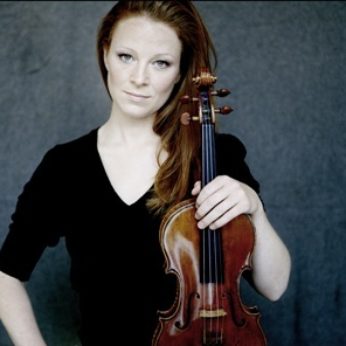Composer: Robert Schumann (b. 1810 - d. 1856)
Performance date: 30/06/2014
Venue: Bantry Library
Composition Year: 1851
Duration: 00:33:50
Recording Engineer: Richard McCullough, RTE
Instrumentation: vn, pf
Instrumentation Category:Duo
Artists:
José Gallardo -
[piano]
Carolin Widmann -
[violin]

The
belief that Schumann’s late works are not among his best goes back to his earliest biographer J.W. Wasielewski, who
maintained they were lacking in vigour and originality. However Wasielewski
explicitly omitted the two violin sonatas from this wide ranging criticism,
possibly because he premiered the First Sonata with Clara Schumann; for the
Second Sonata his place was taken by Joachim. By this time Schumann had fallen
out with the musical authorities in
where he was Musical Director. His health was obviously deteriorating and he
was much more interested in composing than conducting their amateur choir and
not very good orchestra.
We
should be grateful that Schumann did devote so much time to composing at
number of marvellous works; none more so than his two published violin sonatas.
The second in D minor begins with a slow introduction of loud chords. These
spell out the name of the violinist to whom the work is dedicated, Ferdinand
David. There is no note for “i” and in German a “v” becomes an “f”, so the opening
chords spell out the letters DAFD. This
theme occurs in at least eleven different versions throughout the sonata. It
appears in speeded up form as the first movement moves from the slow
introduction to the main body of the movement and it occurs again at the crucial
turning points of the movement. It also appears, though less prominently, in
the remaining three movements.
Once
the first movement assumes its main rapid tempo, we are in a swirling world of
surging themes and unsettling off-beat rhythms.
These large scale late works of Schumann are so original in structure
that they can often be hard to grasp at once.
Schumann favours the lower strings of the violin so that the sound world
he creates in his violin sonatas is richer and darker than usual. This deepens
the unsettling mood of turmoil and drama although Schumann includes passages of
delicacy and light to offset the prevailing darkness.
The
second movement is a scherzo which begins with a repeated four note idea which
might easily have come from Schubert. This alternates with a quieter lyrical
passage which when slowed down becomes the main theme of the slow
movement. The tune is a version of an
old German chorale and provides the basis for a set of four variations. The
movement begins with a statement of the theme by the piano while accompanied by
pizzicato violin. The variations develop with increasing complexity. The third
variation is stormy (DAFD reappears). In the fourth the theme is played by the
violin double stopping while the piano accompanies with sweeping arpeggios. This
is a glorious passage of wonderful intensity. In the final movement, Schumann
returns to the mood of the first movement although more often in major keys than
in minor ones. The main theme is built round a busy, bustling figure. The music
swirls around it, in Joachim’ phrase, in
glorious waves of sound and this fabulous sonata ends on a note of
unexpected triumph.
Copyright © 2025 West Cork Music. All rights reserved.
Designed and developed by Matrix Internet